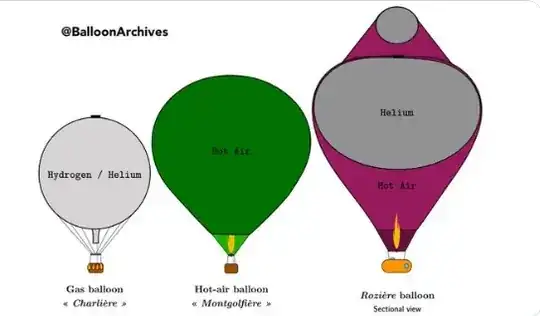(Before I begin, I would like to assure everyone present that, yes, I'm fully aware of the lunacy of this idea.)
Let us assume this takes place on a parallel Earth sometime in the early 1900s, during the dawn of the great age of airships. You, an aspiring aerostat engineer of great creativity and little self-preservation, have been approached by a organization with (relatively) limitless funding and are told that to create a better airship with better lift than what is previously had by everyone.
Now, there's an issue - you can't just create lift out of nowhere for an airship. Sure, you can keep making the envelope and the gas sacks bigger and bigger, but anyone can do that. Suddenly a flash of inspiration hits you - you can make a better lifting gas than anyone else, all you need to is simply fill it with the lightest lifting gas known to man (hydrogen) and then heat the hydrogen cells. I mean, it works for air, right? And hydrogen is lighter than air, right? So it stands to reason that heated hydrogen is the going to be the greatest lifting gas of all time! ...Once you work out the kinks of figuring out how to heat it without killing everyone onboard, anyway, anyway.
The Challenge: Figure out a way to build an airship that safely* uses super-heated hydrogen cells instead of normal ones. Any technology up to 1920 is considered fair game, and alternate technology that could have been discovered but haven't (i.e. metal alloys) are also permitted. The airship dimensions preferably should be modeled after the LZ 104, though if a smaller airship / larger airship is needed, that's fine.
Now, conventionally, this is probably considered to be a "foolish" idea given hydrogen's incredibly flammable (and explosive) properties, but in theory, this should be fully possible, even with early 1900s technology. Now, some people would argue to use helium instead, but those people clearly don't understand science - we aren't trying to be safe and go for second best. The only acceptable solution here involves heated hydrogen cells.
Some people would also point out that the increase of lift would be marginal at best (probably no greater than 3% over normal hydrogen under normal conditions, this depends heavily on how much you can heat the hydrogen) and that whatever methods used to heat the hydrogen would consume all that weight, and to that I respond that it just sounds like an engineering challenge to me.
*For some, but not all degrees of safe. Ultimately, you're flying an airship while attempting to heat giant sacks of hydrogen. Things can go horribly wrong, but the goal here is a design that you can be reasonably sure won't spontaneously ignite.

